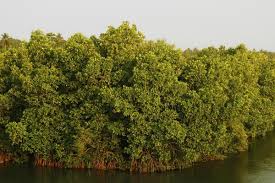First Global Mangrove Assessment:

The first global mangrove assessment by the International Union for Conservation of Nature (IUCN), warns of the imminent collapse of South India’s mangrove ecosystems due to pollution, deforestation, and coastal development.
- Unlike the ecosystems in western and eastern India, those in the south are highly vulnerable to collapse, threatened further by rising sea levels and severe storms linked to climate change.
- The IUCN Red List of Ecosystems (RLE) has assessed mangrove ecosystems globally for the first time, revealing alarming findings.
- Half of the assessed global mangrove ecosystems are at risk of collapse, with nearly 20% classified as high risk.
- Major threats include climate change, deforestation, development, pollution, and dam construction.
- Climate change alone jeopardizes one-third of assessed mangrove
- Sea-level rise is predicted to submerge 25% of global mangrove area in the next 50 years.
- Without significant intervention, by 2050, climate change and sea-level rise could lead to the loss of 1.8 billion tonnes of stored carbon and expose 2.1 million lives to coastal flooding.
- Indian mangroves vary in status: Andaman and Bay of Bengal are classified as Least Concern, while South India is Critically Endangered, and West India is Vulnerable.
- Mangroves play a crucial role in disaster risk reduction, carbon sequestration, and supporting biodiversity and fisheries.




